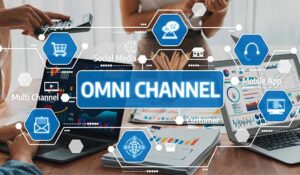Knowing when, where and how your customers expect to interact with your brand is a requisite of providing a flawless omnichannel experience.
Also essential is a holistic view of the customer across all channels of engagement and ensuring that they are all interconnected. That way, when a customer wants to switch channels, the journey experience will be seamless and consistent.
Understanding the customer experience to make every interaction as simple and clear as possible, from the time they first consider the need for your products or services, through to the purchase and ongoing use, builds brand preference and loyalty. It will also differentiate your company from the competition.
Providing a flawless omnichannel experience for your customers isn’t easy. But the rewards to your customers and your business are undeniable. So are the costs to businesses that choose not to focus on customer-centricity and continual improvement of the customer experience.
According to a recent study by the Chief Marketing Officer (CMO) Council, 47% of those surveyed indicated that they would abandon a brand if they repeatedly encountered poor, frustrating cross-channel experiences.
On the other hand, Aberdeen Group says that companies with strong omnichannel strategies retain an average of 89% of their customers, compared to only 33% for companies with poor omnichannel strategies.
This blog will explore what constitutes a true omnichannel experience, the business benefits and challenges, and enabling technologies/functionality.
Omnichannel Defined
Customers have more choices in products and services than ever before. They also have more choices of channels through which they can communicate with brands.
A Frost & Sullivan report indicates that customers will interact with companies on an average of nine different channels.
Many customers are growing impatient with providers that limit how they can interact and make them jump through hoops to buy and use their products and services.
Those businesses that can provide an effortless customer experience throughout the entire journey across all the channels will rise above their competitors. Omnichannel is fundamental to getting there.
Omnichannel accounts for all platforms and devices that customers use to communicate with a brand.
It integrates all the channels and provides instant access to necessary customer intelligence regardless of what channel that customer is using during any and all interactions.
By doing so, omnichannel provides a seamless and effortless experience
Business Benefits
Rather than optimizing an individual touchpoint as an independent experience, omnichannel focuses on creating a single customer experience across all interactions and channels over the entire customer life cycle.
It also provides a unified view of customer behaviour.
Every interaction produces customer intelligence on likes and dislikes, product choices, new feature requests and channel preferences.
All of this data is then available to contact centre agents and others throughout the company so that customers’ questions and issues can be addressed more expeditiously.
Some of the benefits of omnichannel include improving:
- Customer satisfaction/experience
- Customer service
- Customer retention
- Contact centre agent productivity
- Cost reduction
- Revenue
It all begins with improving the customer experience, which in turn positively impacts customer satisfaction.
Ensuring that data is carried from one channel to the next means that customers no longer have to repeat the same information over and over.
This reduces customer effort. It also enables a more personalized customer experience.
Agents and other company representatives can greet the customer by name, review the information the customer has previously provided, and personalize interactions while maintaining consistency across departments and communication channels.
According to the State of the Connected Customer report by Salesforce, 70% of customers cite connected processes are “very important to win their business (such as seamless handoffs between departments and channels, or contextualized engagement based on earlier interactions).” The report also indicates that 72% of buyers expect vendors to personalize engagements.
Omnichannel experiences also improve efficiency and productivity and reduce operating costs.
When agents can fulfil requests and address issues quickly, which they can do better with omnichannel since all the customer information is at the fingertips, they can help more customers each hour, day and week.
Not only does this improve productivity and reduce operating costs, but it leads to better retention, and the ability to cross-sell and upsell. It also results in more recommendations for your products and services, which increases revenue.
Business Challenges
Considering all the benefits of omnichannel for optimizing the customer journey, you may wonder why more companies haven’t jumped on the bandwagon.
The answer is simple – implementing omnichannel has its challenges. Some companies are willing to make the process and organizational changes to get there. Some companies are not.
Here are some of the challenges of implementing a successful omnichannel strategy.
- Disconnected departments and processes – A true omnichannel experience requires an understanding of all the customer touchpoints. Representatives from every department, from the contact centre and operations, to marketing, support and fulfilment must be part of the effort.
- Siloed legacy systems and applications – Most companies are working with systems that were purchased at different times for a single purpose. They weren’t designed to work together.
- Multiple deployment options – Premise, cloud (public or private) or hybrid are the various options to consider. Many companies do not know what are the best criteria for deciding which one is right for them.
- Rising resource costs; skills shortage – Implementing an omnichannel strategy requires resources with the right skills. This initiative is likely going to compete with other corporate priorities and may require additional resources with different skillsets than current employees have.
- Security and compliance risk – Data security and regulatory compliance (TCPA, CFPB, PCI, HIPAA, etc.) are essential. Some companies are leery about how to accomplish this across all the various channels of communication.ail surveys.
Enabling Technologies
There are a number of technologies and capabilities that should be seamlessly integrated in order to achieve a flawless omnichannel experience throughout the customer journey.
- CRM – Having a unified view into each customer is essential to an omnichannel experience. Most companies have a CRM system where most of this data resides.
- Advanced IVR – Systems with intelligent routing and automated responses satisfy customers’ needs for instant information and rapid service for both inbound and outbound interactions.
- Speech Analytics – Post-interaction and real-time analytics are important technologies to incorporate for a better understanding of the customer journey and preference and trend data to help further improve all interactions.
By monitoring and analysing all interactions, speech analytics can also identify agent behaviours that improve customer satisfaction and find areas for improvement. - Self-Service Options – Consumers have become weary of companies that do not offer self-service options. Most would prefer to have their questions answered and issues resolved without ever having to talk to a human. Self-service options such as chatbots and virtual assistants provide this option.
- Gamification – Solutions that use game mechanics to motivate and engage contact centre agents can help develop and reward agent behaviours that elevate the customer experience.
- Social Support – Customers are out on social media and they know when you are not, and they recognize and appreciate it when you are.
Choosing a Partner
You don’t have to be an expert on all the technologies for creating an extraordinary experience throughout the customer journey.
You can rely on the right partner for this expertise. They can also help you identify gaps, make recommendations, guide you through implementation and provide continued support should you need it.
Author: Robyn Coppell
Published On: 24th Oct 2019 - Last modified: 30th Oct 2019
Read more about - Guest Blogs, Noble Systems





































